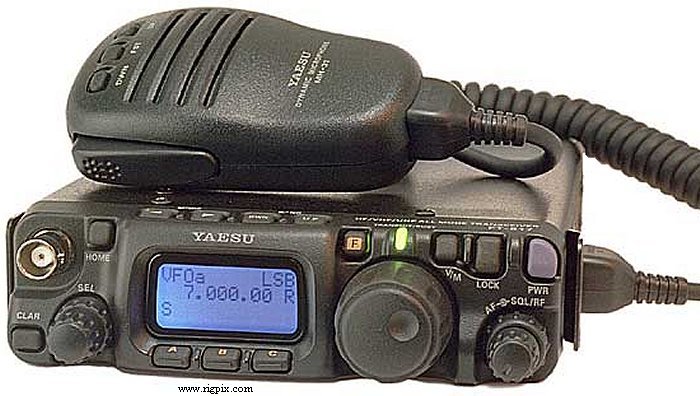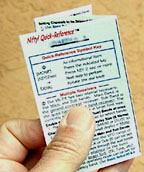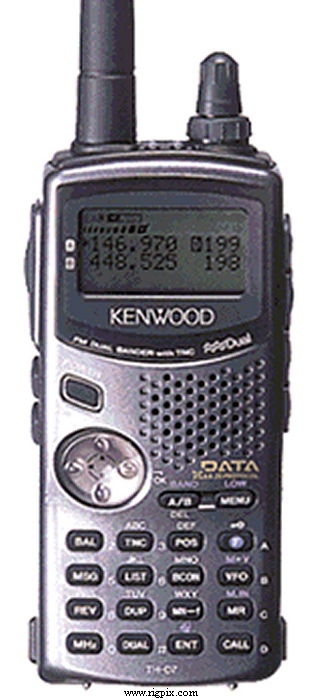 My current assignment at Fort Leavenworth has me traveling quite a bit. My intent has been to bring a rig with me and have some casual QSOs while on the road. My success has been mixed. I would mostly attribute this to either a lack of planning on my part or being in a stuck in a hotel room with zero antenna opportunities.
My current assignment at Fort Leavenworth has me traveling quite a bit. My intent has been to bring a rig with me and have some casual QSOs while on the road. My success has been mixed. I would mostly attribute this to either a lack of planning on my part or being in a stuck in a hotel room with zero antenna opportunities.
One of the most inspiring ham radio blogs I ever ran across was the 100 Pound Dxpedition. I enjoyed how Scott, NE1RD, covered his adventures of conducting portable operations… documenting what worked and what did not. His last post on that paticular blog was back in 2007, but I still use the site as a reference. Scott’s praise for the Buddipole led me in using the Buddipole during my recent tour in Korea. Another tip from Scott I am going to try out is using a hardside golf bag case to transport my Buddipole to Hawaii.
 Now for a rig… I think the Elecraft KX3 would be ideal for a Hawaii trip. With 10 watts output and an internal battery, I can’t think of better rig to take to the beach. But the wait time for the KX3 is still quite a while. I have both an Elecraft KX1 and a Yaesu FT-817ND. The KX1 would be great due to its small size and ease of use. But it is limited to only CW and I would like to do some PSK in addition to CW.
Now for a rig… I think the Elecraft KX3 would be ideal for a Hawaii trip. With 10 watts output and an internal battery, I can’t think of better rig to take to the beach. But the wait time for the KX3 is still quite a while. I have both an Elecraft KX1 and a Yaesu FT-817ND. The KX1 would be great due to its small size and ease of use. But it is limited to only CW and I would like to do some PSK in addition to CW.
I pulled out my FT-817 and conducted an inventory:
– West Mountain Radio RIGblaster Plug n Play connects directly to the DIN socket on the back of the rig.
– CAT cable that connects from the RIGblaster to the rig’s ACC socket which enables rig control.
– PowerPole 12v adapter.
– Palm Paddle.
– Elecraft T1 Auto-tuner.
– Nifty manual for the FT-817.

My FT-817 has quite a few of the optional bells and whistles from W4RT:
I also splurged on two recent upgrades:
– Peg Leg tilt stand – I think this will be helpful as one of my significant dislikes of the FT-817 is the small display which is hard to see.
– Magnets for the Palm Paddle – this is critically important as the Palm Paddle by itself is not heavy enough. The magnets allow the Palm Paddles to firmly stick to the top of the FT-817.
For PSK, rig control, and logging I have my Dell Mini netbook. I had not used the netbook in a while, so I started it up to see how it was working. I initally purchased it back in 2009 baselined with Ubuntu and have kept Ubuntu installed on it since then. After booting it up. I updated the distribution to 10.04 LTS and installed fldigi. The RIGblaster easily interfaced with the netbook via a USB connection and the headphone/microphone jacks.
I configured fldigi to work with the RIGblaster to include rig control using Hamlib:
– Audio: PortAudio using the netbook’s hardware soundcard for both Capture and Playback
– Rig: Hamlib; Device /dev/ttyUSB0; Baud rate 38400; Stopbits 2; PTT via Hamlib command checked
… clicked on the Initialize button and I was good to go.
Setting up the macros on flidigi is pretty straightforward with the default macros only needing slight tweaking for my personal preferemces.
Once I fired everything up all I had to do was switch to 14.070 MHz, switch the mode to DIG, and drop the input level a bit. With the narrow yellow PSK streams cascading down the waterfall, I picked one that was calling CQ and answered. Transmit worked and my home antenna provided a nice low SWR, no need for the tuner. My macros worked and the QSO was concluded successfully. All with 5 watts.
I plugged in the Palm Paddle, switched to 7.115 MHz, listened and heard nothing, then used the paddles to send QRL? a few times. SWR still looked decent. After a few CQ calls, I got an answer followed by a short QSO. Great – both PSK and CW were working FB.
Now the question is: do I want to bring my small Tokyo Hy-Power HL-100B amplifier that will raise the output to 100 watts? If I bring the amp, I will have to bring a power supply and a different tuner. I am thinking I need to be able to use two different configurations:
(A) Beach and Buddipole: using the barefoot FT-817, running everything on batteries.
(B) Lanai Portable: used from the hotel room, with amp and assoicated power supply.
Now it is time to go through my Buddipole bags and figure out what I need to pack.
Looks like I will be there during the Hawaii QSO Party!



 My current assignment at Fort Leavenworth has me traveling quite a bit. My intent has been to bring a rig with me and have some casual QSOs while on the road. My success has been mixed. I would mostly attribute this to either a lack of planning on my part or being in a stuck in a hotel room with zero antenna opportunities.
My current assignment at Fort Leavenworth has me traveling quite a bit. My intent has been to bring a rig with me and have some casual QSOs while on the road. My success has been mixed. I would mostly attribute this to either a lack of planning on my part or being in a stuck in a hotel room with zero antenna opportunities.  Now for a rig… I think the Elecraft KX3 would be ideal for a
Now for a rig… I think the Elecraft KX3 would be ideal for a 



 My next assignment is in South Korea and I hope to have a little bit more time on the air while I am there. The process for getting an amateur radio license for South Korea is pretty
My next assignment is in South Korea and I hope to have a little bit more time on the air while I am there. The process for getting an amateur radio license for South Korea is pretty 

 I eventually figured out how to set the tone and was on the repeater with the other folks. Then with a bit more thought and troubleshooting, I discovered my feedline connection to the rig had come loose and with that fixed I was back in business. Part of the problem is that I have a relatively new rig in the truck, the Kenwood TM-D710A. It is a very complicated rig and I have only scratched the surface on how to operate it. I was able to interface it with the Garmin Nuvi 350 thanks to a cable from
I eventually figured out how to set the tone and was on the repeater with the other folks. Then with a bit more thought and troubleshooting, I discovered my feedline connection to the rig had come loose and with that fixed I was back in business. Part of the problem is that I have a relatively new rig in the truck, the Kenwood TM-D710A. It is a very complicated rig and I have only scratched the surface on how to operate it. I was able to interface it with the Garmin Nuvi 350 thanks to a cable from 

 The title of this post is a little misleading. As I mentioned before, I am attending the Army’s Command & General Staff College (CGSC) here at Fort Leavenworth, Kansas (… I bet you thought I was out here in Kansas just for the nice weather). One of the new requirements we have as students at is to egage in “Strategic Communication”. Wikipedia defines strategic communications as: communicating a concept, a process, or data that satisfies a long term strategic goal of an organization by allowing facilitation of advanced planning. Our requirements as students to engage in strategic communication does not exactly line up with that definition, but I think it gives you an idea of where the Army is headed. The bottom line is the Army wants to develop officers who are familiar and comfortable in dealing with the media in order to get the Army’s “message” out. In the past the military has been traditionally media shy (understatement), either making heavy use of the “no comment” or deferring to our public relations officers. No more. The Army recognizes this is the new media age and those that get their story out first, in a clear and understandable fashion are likely to better garner public support… both domestic and international. Okay… so back to school. My requirements, as related to strategic communications, are to: (1) participate in an actual media interview (television, print, or radio), (2) speak to a community group, school, or other organized gathering of citizens, (3) write professionally by submitting a letter to the editor, Op-Ed piece, or article for publication, and (4) participate in a reputable blog about their military service.
The title of this post is a little misleading. As I mentioned before, I am attending the Army’s Command & General Staff College (CGSC) here at Fort Leavenworth, Kansas (… I bet you thought I was out here in Kansas just for the nice weather). One of the new requirements we have as students at is to egage in “Strategic Communication”. Wikipedia defines strategic communications as: communicating a concept, a process, or data that satisfies a long term strategic goal of an organization by allowing facilitation of advanced planning. Our requirements as students to engage in strategic communication does not exactly line up with that definition, but I think it gives you an idea of where the Army is headed. The bottom line is the Army wants to develop officers who are familiar and comfortable in dealing with the media in order to get the Army’s “message” out. In the past the military has been traditionally media shy (understatement), either making heavy use of the “no comment” or deferring to our public relations officers. No more. The Army recognizes this is the new media age and those that get their story out first, in a clear and understandable fashion are likely to better garner public support… both domestic and international. Okay… so back to school. My requirements, as related to strategic communications, are to: (1) participate in an actual media interview (television, print, or radio), (2) speak to a community group, school, or other organized gathering of citizens, (3) write professionally by submitting a letter to the editor, Op-Ed piece, or article for publication, and (4) participate in a reputable blog about their military service. 